Potted clematis: growing secrets
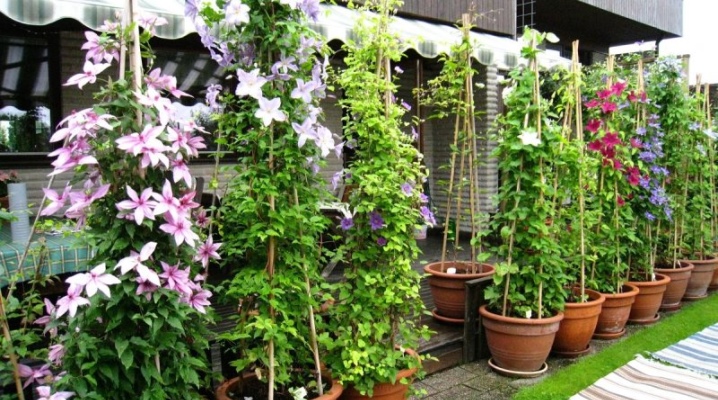
Many garden crops grow great in pots and tubs. Clematis is a great example of this. In addition, pots, unlike flower beds, are mobile, they can be rearranged at the request of the owner into the garden, on the terrace, near the entrance to the house or on the balcony.
Which varieties grow best in a container?
The most successful is the cultivation of miniature clematis, which have a compact shape, and their stems are no more than two meters long. We are talking about such varieties as "Jeanne d" Arc "," President "," Mrs. Cholmondeley "and others. They bloom for a long time and profusely, in addition, they have a large number of flowers, colors and textures of flowers. For example, Angela blooms with striped, bright, catchy flowers, while the dwarf Piilu first produces abundant double flowers, and then begins to bloom with striped flowers.
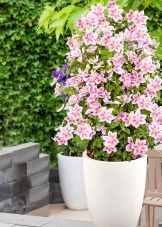
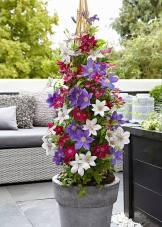
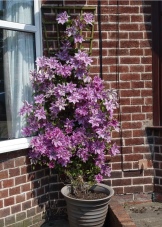
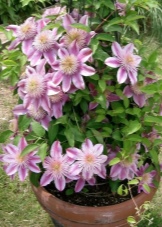
You can also plant medium-sized varieties, but it is better to place them not in hanging pots, but in floor pots. Dwarf clematis will feel great in hanging pots or long boxes, lowering the shoots to the very ground.
A seedling for planting in a container must have a well-developed root system, obtained either by dividing an adult plant, or grown for two or three years.

Landing rules
To plant a plant correctly, you need to follow a certain sequence of actions.
- Clematis are planted in containers in the spring, for this they use high pots. Their diameter should not be less than 30 cm. Wooden boxes are also suitable.
- First, a drainage layer is laid out on the bottom, it should be about 1/8 of the height of the pot wall. The substrate can be turf or ordinary soil from the garden, mixed with compost or humus, sand and peat. Be sure to add superphosphate - 0.5 cups and chalk - 1 cup.
- Immediately upon planting, you need to take care of installing a support - put a ladder or trapezoid at least one meter high so that it is possible to fix the growing shoots with an interval of 20 cm.
- Next, you need to dig the container into the open ground so that it completely disappears. During the season, clematis will root well, its shoots will grow well.
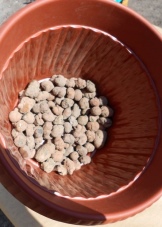
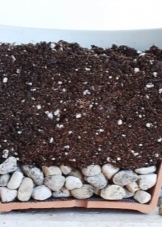
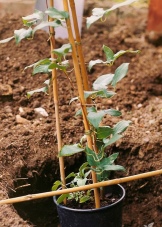
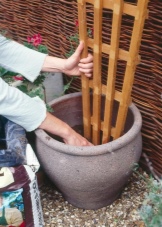
In late October or early November, you need to dig out a container and cut off the tops of the shoots. Those shoots on which flowers bloomed are not removed from the support. The container with the plant should be placed in the basement, the temperature in which will not be lower than 0 degrees and not higher than +2. Clematis will stay there until January. Its maintenance during this period is simple - rare watering, no need to feed.
Then it must be transferred to a glazed balcony, installed in a sufficiently lit place. The temperature should be + 8-12 degrees, then the budding process will go perfectly. At higher temperatures, not a single bud may appear. As soon as budding has begun, you need to increase the temperature to + 15-18 degrees, or simply move the container to a room where it is warm. Around the end of winter and early spring, clematis begins to bloom. It is important to ensure that direct sunlight does not fall on the ground in the container.
If the bushes grow strongly, then it is best to plant them in the open field, and plant young plants in pots.
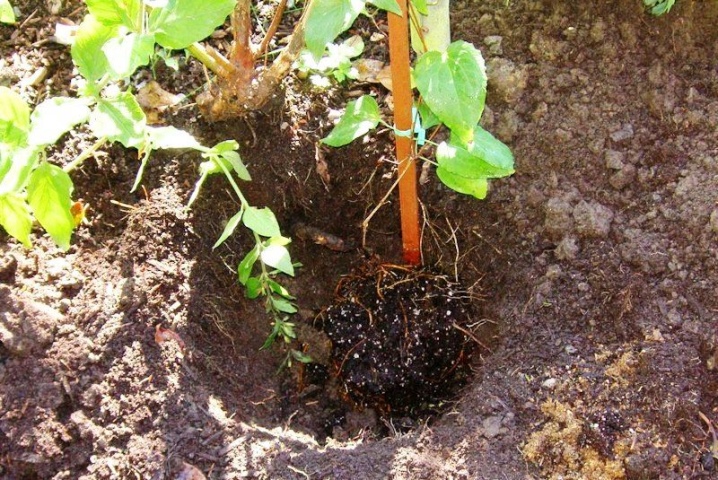
It is better to choose a larger capacity, regardless of whether it is a ground tub or a hanging planter. The best option is 20 liters, however, in a fifty-liter container, you can create a composition of three lush bushes.
Plant care
Watering clematis growing in a container is carried out from a pallet, and not from above. Top dressing is done regularly, mineral and organic fertilizers are diluted in water for irrigation. If clematis does not have enough light during bud formation and flowering, it can change the color of the flowers. There is nothing wrong with this, you just need to provide the plant with a sufficient amount of light and feed it with calcium nitrate, then the flowers will regain their intended color.
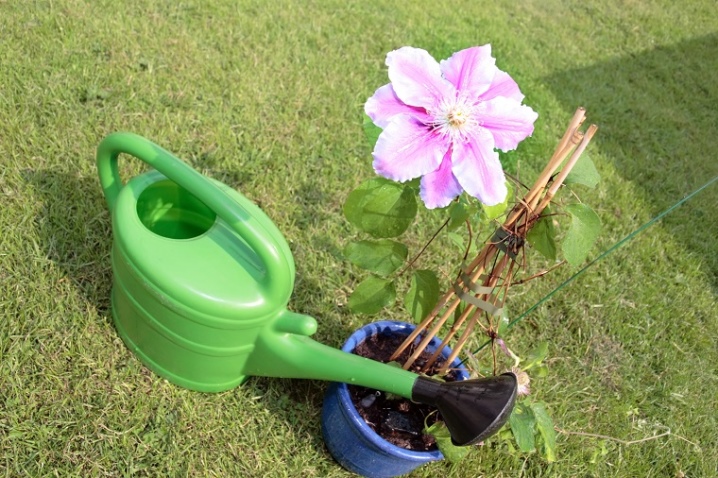
For more than two years in a row, one and the same clematis seedling cannot be used for forcing. This leads to severe depletion of the plant. Therefore, after two years of distillation, clematis needs to be settled in the garden and left alone for a couple of years, allowing it to recover. Natural conditions and good care will contribute to this. As soon as intensive flowering resumes, you can re-use clematis in forcing.
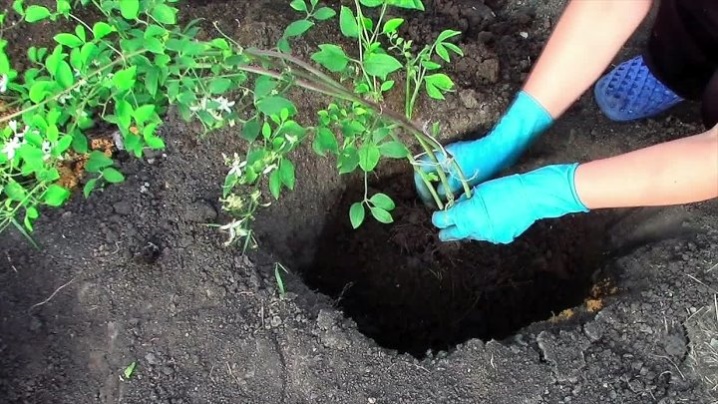
This plant is relatively unpretentious, it feels great outdoors. It does not like the bright rays of the sun, but partial shade is the best place for it. It is not difficult to take care of him, but regularity is required in everything - in watering, feeding, identifying diseases.
The transplant should be done every two to three years without fail.
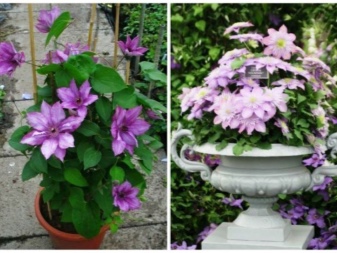
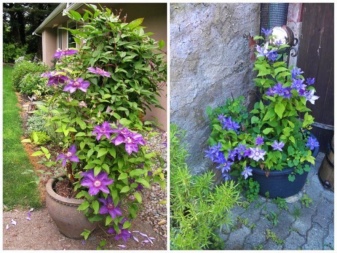
Diseases
Clematis are very sensitive to stem injuries, through them various infections enter the plant, including the most dangerous for them - a fungus. This disease leads to the drying out of the stem and often the death of the entire plant. As soon as you notice the signs of fungus, it is necessary to carry out a total pruning of clematis. - all the stems are cut to the ground, this is the only way to save him. If you succeeded, and the fungus did not cause radical damage to the plant, then soon new shoots will appear on the cuts, and the bush will grow again.
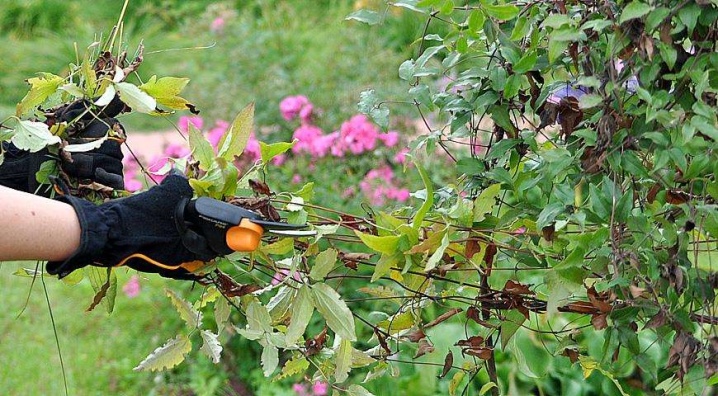
Clematis are also susceptible to pests - aphids, mealybugs, miner flies, and snails. Diseases such as powdery mildew, brown leaf spot and rust do not bypass them, although there are varieties that are more resistant to insects and diseases.
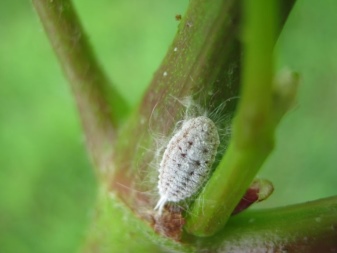
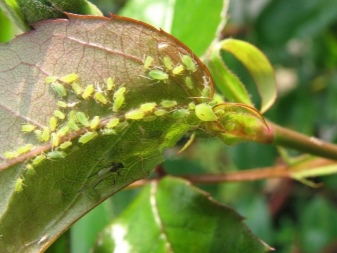

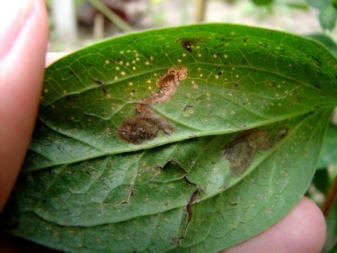
Where clematis is used in containers
These bushes are so beautiful that they are suitable for both home and outdoor decor. Vertical gardening is now used both in residential premises and in offices, and it looks organic everywhere. In summer, clematis looks beautiful in long boxes on the sides of the terrace. It can be used in the decor of a restaurant, a coffee shop, and a country house. The variety of varieties and colors of clematis allows you to organically fit it into any interior, giving it the colors of the Mediterranean flavor, relaxation and freshness. This plant cleans the air from various harmful impurities by releasing phytoncides.
You can choose varieties of the same color, or you can create multi-colored compositions that form beautiful combinations.

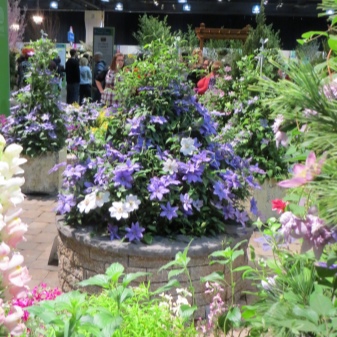
For information on how to grow clematis in pots, see the next video.







































































































The comment was sent successfully.